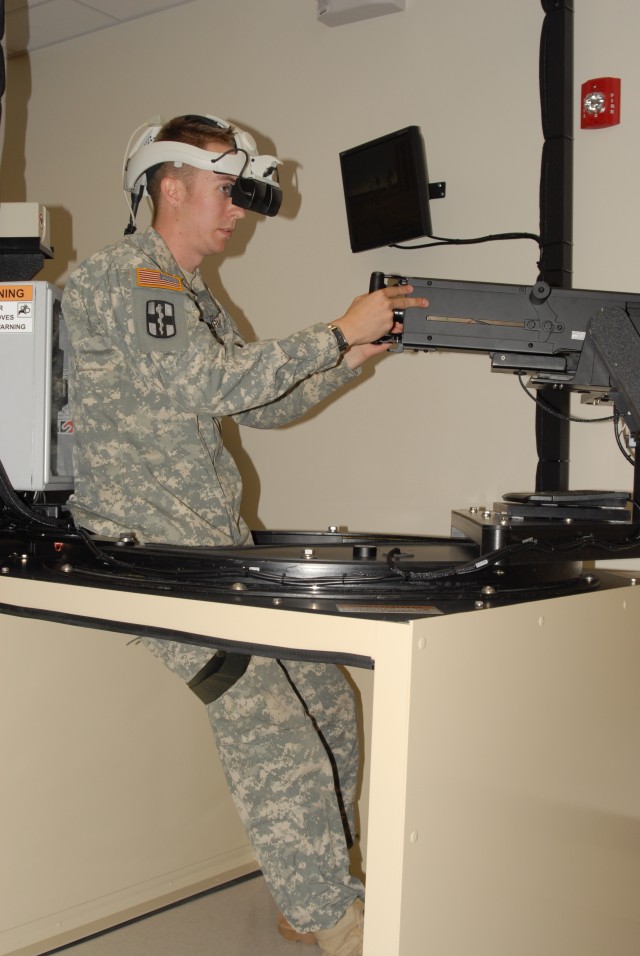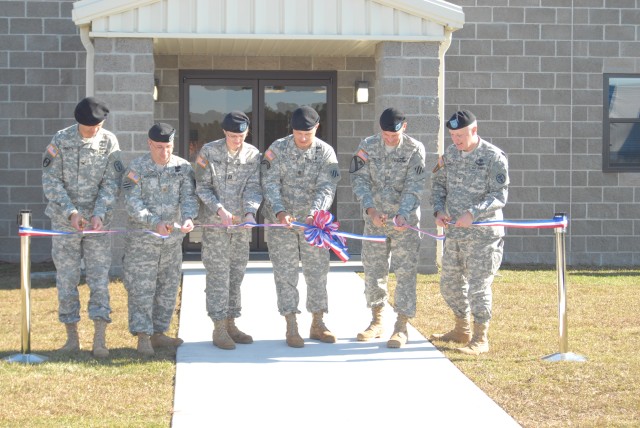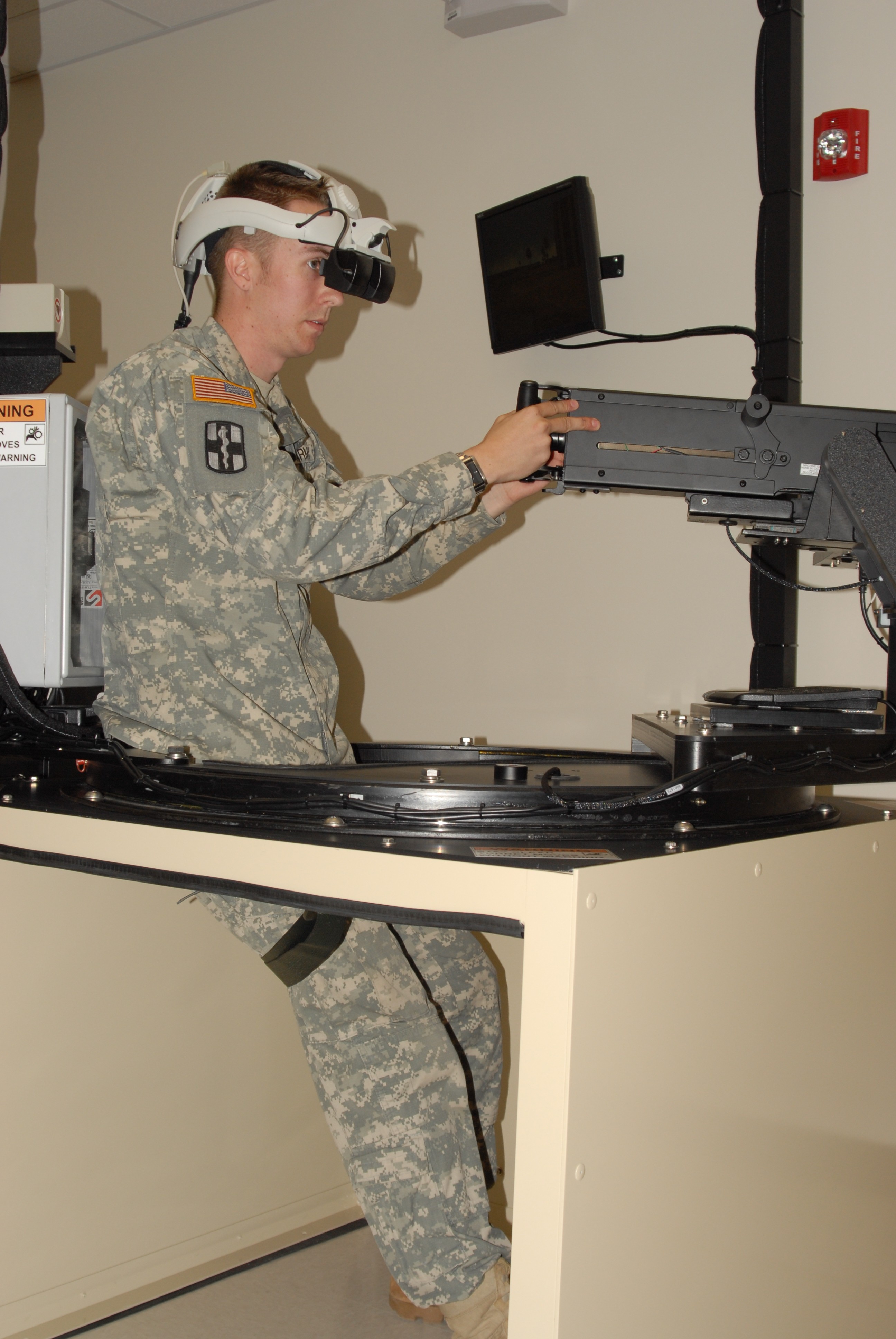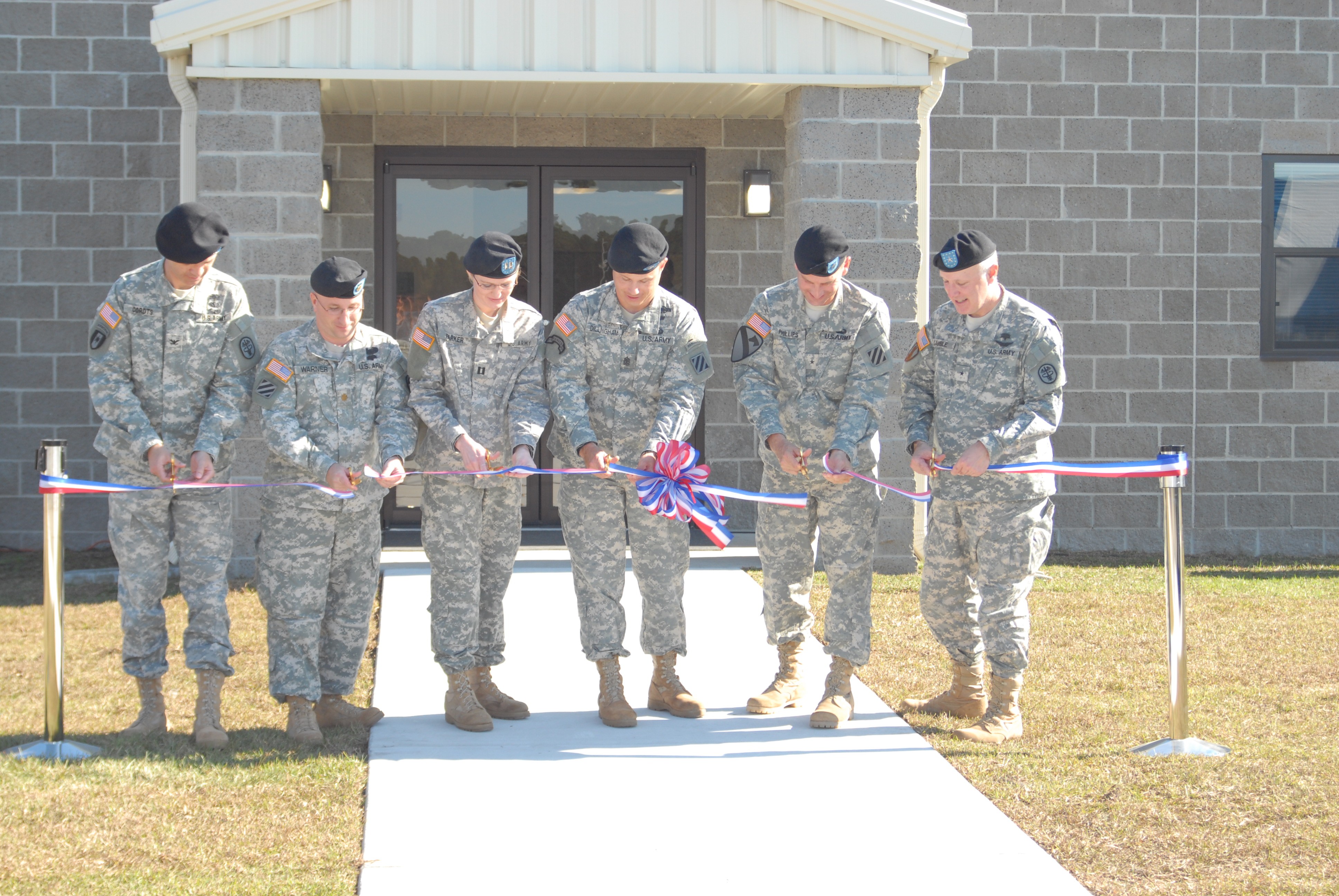FORT STEWART, Ga. - Fort Stewart and Winn Army Community Hospital took another step forward in the treatment of Soldiers when the Warrior Restoration Center was officially opened, Nov. 3. The center is located behind Winn's emergency room in buildings 357 and 359.
The new two-building clinic deals primarily with Soldiers who suffer from traumatic brain injuries, post-traumatic stress disorder and chronic pain. The clinic is a specialty-based clinic and is available by referral only, according to Capt. Jessica Parker, chief of the WRC.
Brigadier General Bryan Gamble, deputy commander of Southeast Regional Medical Command and the Dwight D. Eisenhower Army Medical Center at Fort Gordon, Ga., was the guest speaker at the ribbon cutting, which was attended by Fort Stewart senior leaders, including Brig. Gen. Jeffrey Phillips, senior commander; Col. Paul Cordts, Winn commander; and Command Sgt. Maj. Jeffrey Ashman, command sergeant major-rear.
"It's not a weakness to seek mental health help, but rather a strength," Brig. Gen. Gamble said. "We need to always remember the Soldier creed, 'I will never leave a fallen Soldier,' whether they have fallen on the field of combat, or at home."
The new clinic is unlike any other at Fort Stewart, which will focus solely on treatment for the unseen wounds that Soldiers can suffer in combat or at home.
"It (the WRC) adds a focus on the invisible wounds of war: PTSD, concussion and other types of behavioral health issues," Col. Cordts said. "These two buildings will focus on those wounds that we can't see; they place the appropriate emphasis that those, like physical wounds, can be debilitating as well."
The center offers a more intensive and symptom-specific treatment for Soldiers and will treat them with alternative therapies, as well as traditional therapies.
"What is important about the WRC is that they are focusing on holistic medicine - the recognition that not all illnesses and injuries that Soldiers have can be treated with a pill," said Col. Cordts. "Here, Soldiers can be treated with other types of therapies, including alternative therapies. This building represents the systematic recognition that behavioral health is just as important as physical health."
One of those alternative therapies used for treatment at the WRC is virtual training simulation, which is used to assist Soldiers in their recovery. The simulators include a simulated gunner turret and humvee convoy simulation.
"As Soldiers are recovering, these (simulators) are a way to have a controlled environment that helps to ease them back into action," said Mick Hoffstetter, a neurologist at WRC. "The main goal is to get the Soldiers well, so that they can return to duty."
According to Capt. Parker, the WRC currently has 600 active cases.
"(This) center empowers Soldiers to take over their own recovery," she said.




Social Sharing